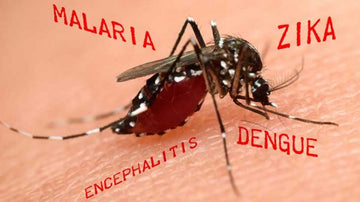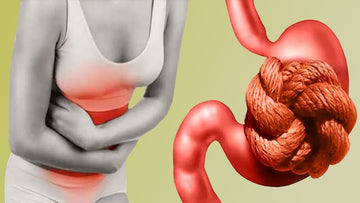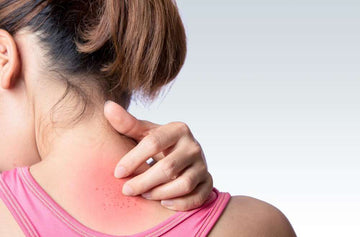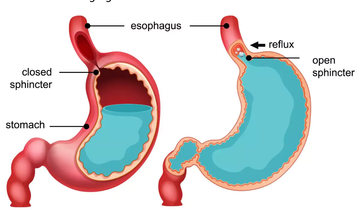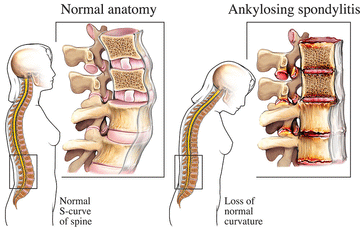
Ankylosing spondylitis is a form of arthritis which occurs in the vertebrae of spine. It is a chronic disease which develops over time and causes the bones of spinal column to fuse. It is thus also known as axial spondylo arthritis. It is an inflammatory disease of the spine which makes the spine less flexible and results in a stooped posture. Sometimes ribs are also affected which makes a person difficult to breathe.
The symptoms of ankylosing spondylitis start in the early adulthood. The inflammation of joints starts first between the base of spine and pelvis. Then it spreads to other body parts. The symptoms appear slowly and lead to slow progression of the disease.
There has not been found any permanent cure of the disease but there are some medications which help in managing symptoms of the disease. Good eating habits and a healthy lifestyle are very helpful in ankylosing spondylitis.
WHAT ARE THE CAUSES OF ANKLYOSING SPONDYLITIS?
Ankylosing spondylitis has no known particular cause. But researchers found it to be caused due to genetic factors. People having a gene HLA-B27 in their body are more likely to suffer from ankylosing spondylitis. However, it is not seen in all patients containing the disease.
WHAT ARE THE RISK FACTORS OF ANKYLOSING SPONDYLITIS?
Following are the factors which make a person more prone to ankylosing spondylitis:
- Late adolescence or early adulthood
- Weakened immune system
- Increased sugar levels
- Crohn’s disease
- Ulcerative colitis
- Psoriasis
WHAT ARE THE SIGNS AND SYMPTOMS OF ANKYLOSING SPONDYLITIS?
The symptoms of ankylosing spondylitis appear gradually. With time, the symptoms of ankylosing spondylitis worsen with time.
Following are the common signs and symptoms of ankylosing spondylitis:
- Pain in lower back
- Stiffness in the affected joints
- Cervical pain
- Pain in joints
- Difficulty in breathing
- Feeling tired
- Loss of appetite
- Rapid weight loss
- Abdominal pain
- Diarrhea
- Skin rashes
- Blurred vision
WHAT ARE THE POTENTIAL COMPLICATIONS OF ANKYLOSING SPONDYLITIS?
Ankylosing spondylitis more commonly affects spinal vertebrae. Following are the complications which arise with ankylosing spondylitis:
- Fusion of vertebrae known as ankylosis
- Kyphosis means forward curvature of the spine
- Decreased bone density {osteoporosis}
- Inflammation of the eye known as uveitis or iritis
- Increased sensitivity to light {photophobia}
- Pain in chest which leads to difficulty in breathing
- Inflammation of the jaw
- Scarring and inflammation of nerves
HOW THE DIAGNOSIS OF ANKYLOSING SPONDYLITIS CAN BE DONE?
The doctor will ask about the signs and symptoms of the disease to the patient. He will do a thorough physical examination to look for any swelling and change in body posture. He will take family history of the patient and take past medical history also. The doctor will recommend some of the following tests to the patient for the evaluation of the disease:
- Blood tests
- X-rays
- MRI
- CT scan
- Bone density test
Management of Ankylosing spondylitis according to ayurveda-
Ankylosing spondylitis is a type of Arthritis that causes inflammation in the vertebral discs. Ayurveda has very effective natural treatments and herbal medications to reduce the pain caused by Ankylosing spondylitis.
- Abhyanga
- Sneha basti
- Upnaham
- Kashaya basti
Herbs for Ankylosing spondylitis-
- Ashwagandha
- Haritaki
- Giloy
Yoga asana for Ankylosing Spondylitis
- Tadasana
- Baddha konasana
- Marjariasana
- Adho mukha svanasana
Lifestyle modification for Ankylosing Spondylitis-
- Eat nutritiously, eat plenty of fruits and vegetables, and eat lots of whole grains
- Limit alcohol consumption
- Quit smoking
- Get quality sleep
- Get moving – exercise or physical therapy, this helps maintain joint mobility, flexibility and core strength.
Ankylosing Spondylitis Care Kit
1. Pain – O – Kill tablet–
These are the herbal tablets made up of Jyotishmati (Celastrus paniculatus), Devdaru (Cedrus deodara), Rasna (Pluchea lanceolata), etc. The tablet is very beneficial in reducing stiffness, pain, tenderness, etc. CAC Pain o kill tablet is ayurvedic and purely herbal formulation. It help to relax your muscles and muscles cramps thus relieving pain. It balances all the three doshas of your body thus maintaining proper blood circulation. It provides soothing effect to the affected area of pain. It contains various herbs like Jivanti, Musta, Usher, Bilwa, Shatavri and Kantakari. All these herbs are natural pain relievers.Recommended Dosage – Take 1 tablet twice daily with normal water.
2. Trikatu Syrup–
Trikatu syrup is considered as the best Ayurvedic remedy in pacifying the Vata Doshas and has amazing results in curing this condition. TRIKATU SYRUP is purely Ayurvedic formulation made up of three herbs. CAC Trikatu Syrup helps to eliminate excess Kapha or mucous from the body, supports respiratory system, manages weight, helps to take out impurities or ama from the body, supports healthy detoxification, reduces swelling. It shows anti-inflammatory, analgesic, expectorant, antioxidant properties. This syrup is made up of equal parts of three herbs such as Pippali (Piper longum), Shunthi (Zingiber officinale), & Marich (Piper nigrum) that maintains the metabolism in the body. It is an Appetizer and it improves digestion, supports normal gastric function, and normal circulation.Recommended Dosage – Take 2 teaspoonful twice daily.
3. Pain – O – Kill Syrup –
In ankylosing spondylitis, a patient has to suffer from tenderness, severe pain, etc. The syrup plays the best role in reducing such types of symptoms because it contains various vata pacifying herbs such as Shudh guggulu, Ashwagandha, Nirgundi, Hadjod, etc. that acts as an anti-inflammatory, anti-oxidant, & analgesic in nature.Recommended Dosage – Take 2 teaspoonful twice daily.
4. Rasayan Vati –
Rasayan vati is herbo-mineral Ayurvedic formulation which contains various herbs such as Aswagandha, Shilajeet, Amla, Kesar, Musali, Shatavar, Brahmi , Swarn Makshik Bhasam, Yashad Bhasam, Mukta pisti, Praval pisti, Jaiphal, Vang Bhasam, Aswagandha, Dalchini, Javitri, Gokhru, Kaunch Beej, Shilajeet, Saunth, Mirch, Pipli, Amla, Kesar, Manjith, Anant Mool, Brahmi, Musali, Shatavar, Swarn Vang, etc. These ingredients show antioxidant, anti-inflammatory, antipyretic, analgesic, immune- modulator properties. These tablets provide good results in General debility, Psychological disorders, and improves immunity.Recommended Dosage – Take 1 tablet twice daily.
5. Vata Tablet
Vata balance tablet is a rejuvenating blend of herbs is specially formulated to balance Vata doshas without aggravating Pitta or Kapha doshas. It may be used to support overall health and well-being by Vata constitutions with or without food. For those with a dual constitution that includes Vata or a tridoshic constitution, it is an excellent formula for the Vata season, which in most parts of the world is autumn and early winter.Recommended Dosage – Take 1 tablet twice a day with normal water.
6. Nerve up tablet –
Nerve up tablets help in balancing the vata dosha and reduces kapha dosha, and acts as nervine stimulant. It shows effective results in improving the central nervous system. It contains natural ingredients like shudha kuchala, shudha shilajeet, praval pishti, shankh bhasma etc. This tablet helps in the symptoms related to Allergy, ankylosis spondylitis.Recommended Dosage – Take 1 tablet twice daily.
7. Pain – O – Kill Oil –
This is for external application that shows instant relief in pacifying severe pain, tenderness, redness, swelling, etc. The oil is made up of Rasna (Pluchea lanceolata), Kushtha (Saussurea lappa), Vatsnabh (Aconitum ferox), etc. Pain o kill oil is ayurvedic and purely herbal formulation. It helps to relax your muscles and muscles cramps thus relieving pain. It balances all the three doshas of your body thus maintaining proper blood circulation. It provides soothing effect to the affected area of pain.Method of application – Apply over the affected area twice daily.


